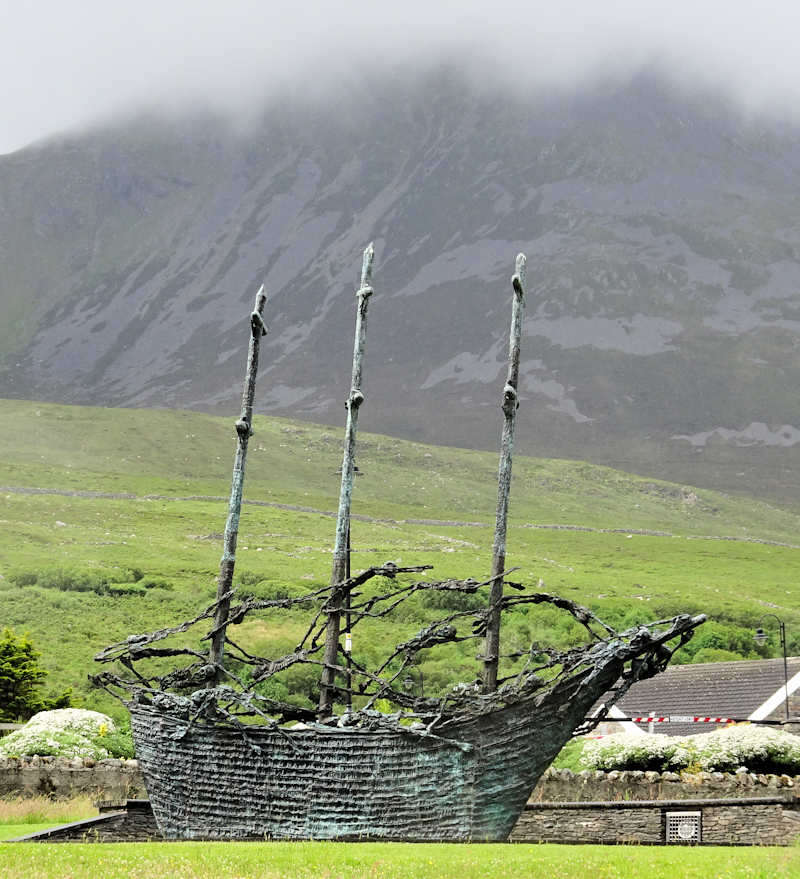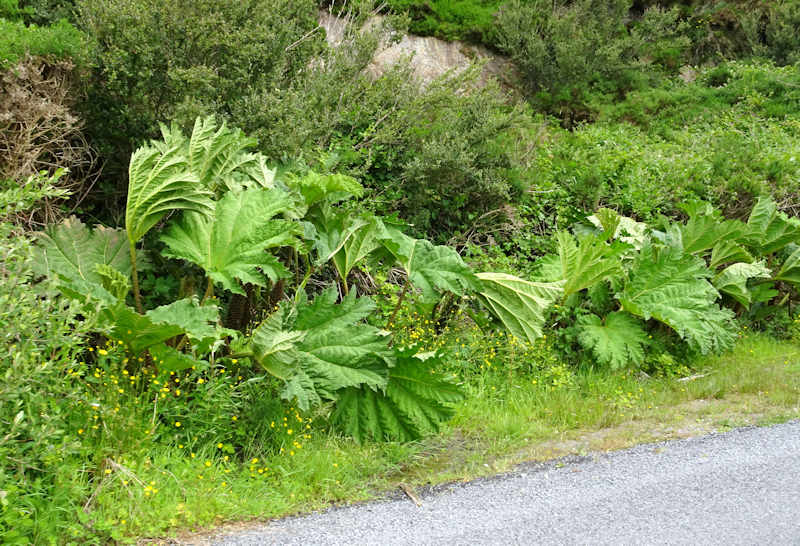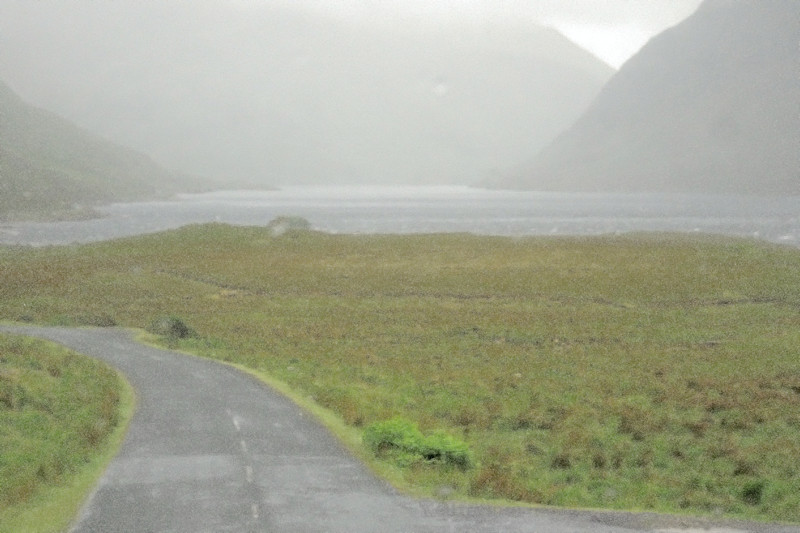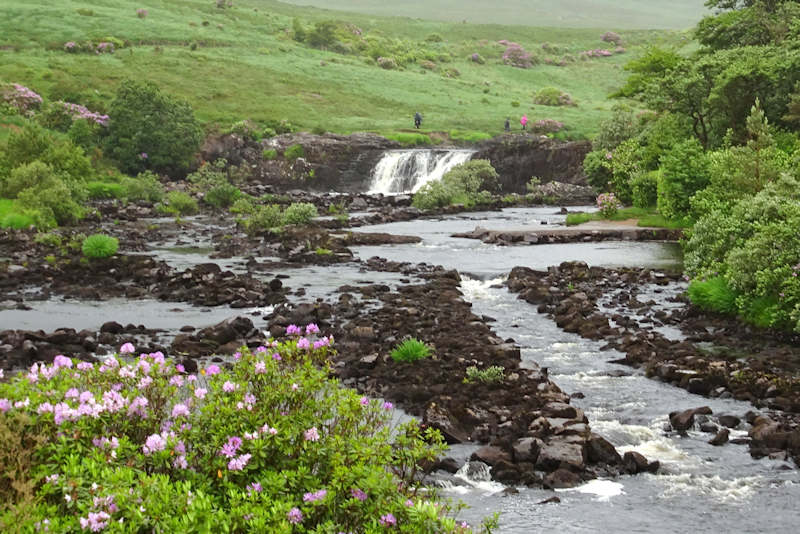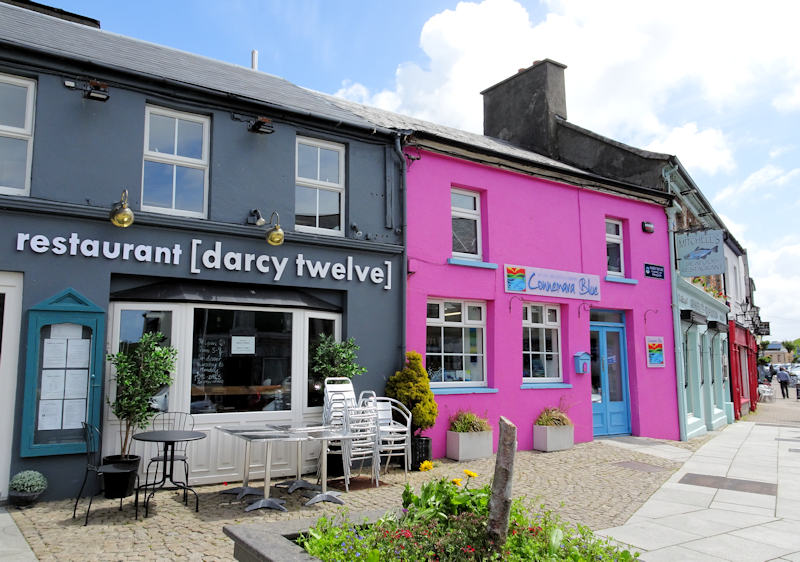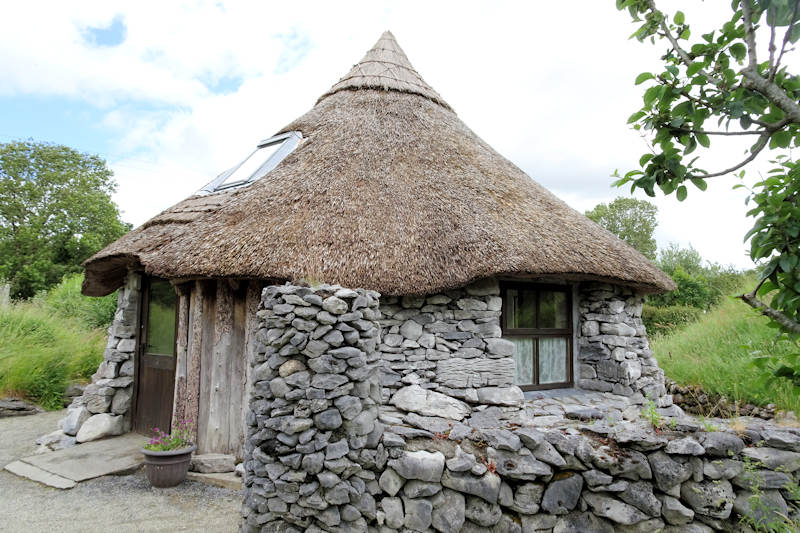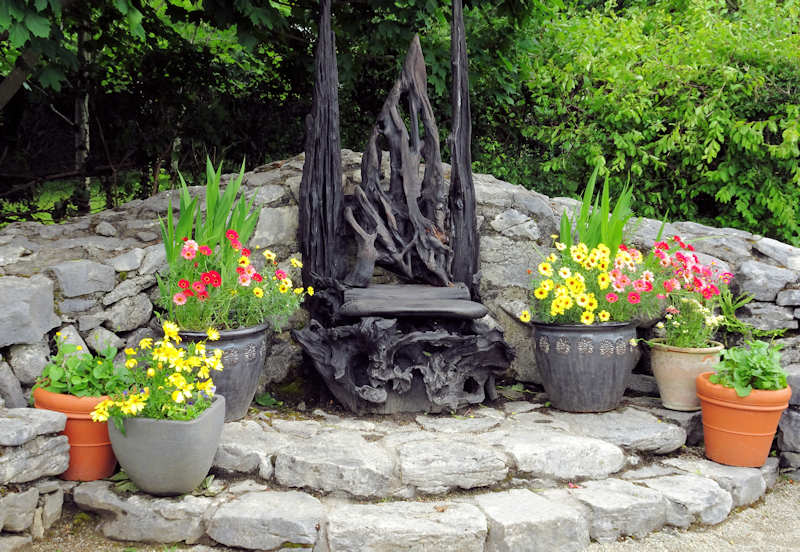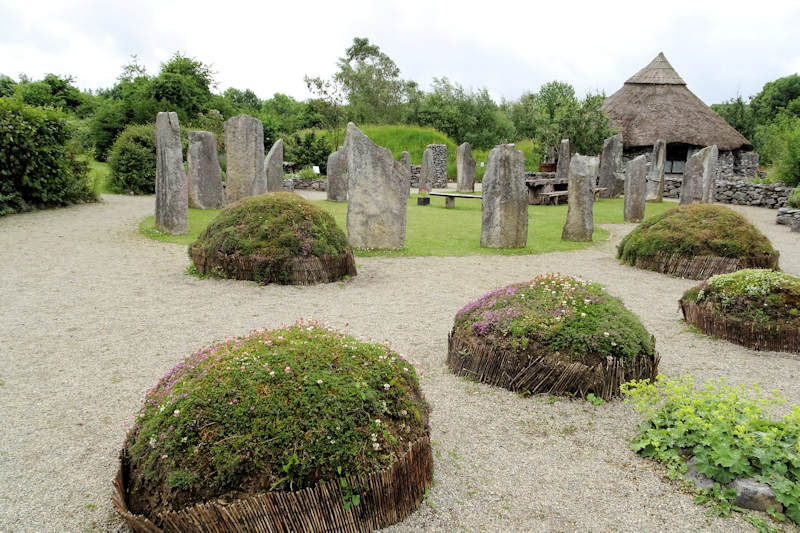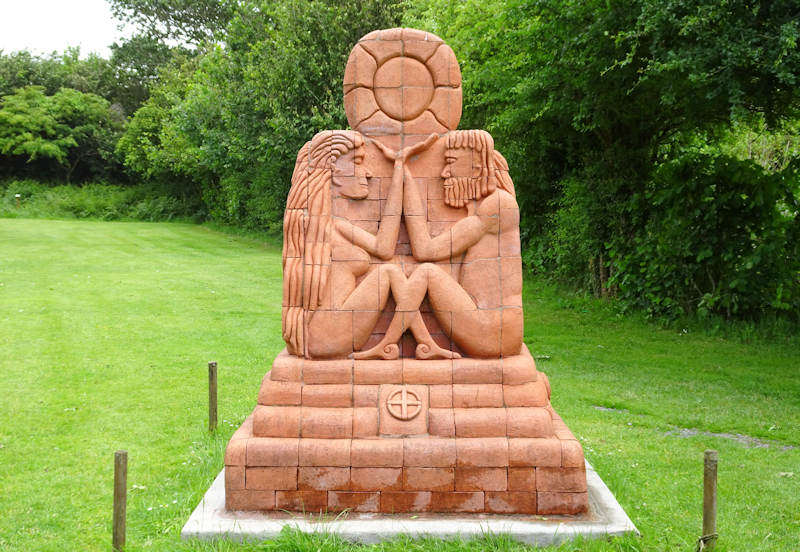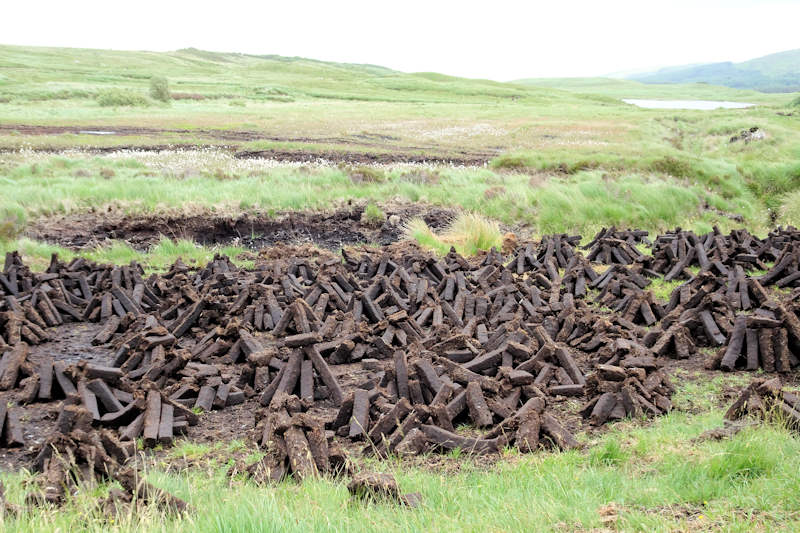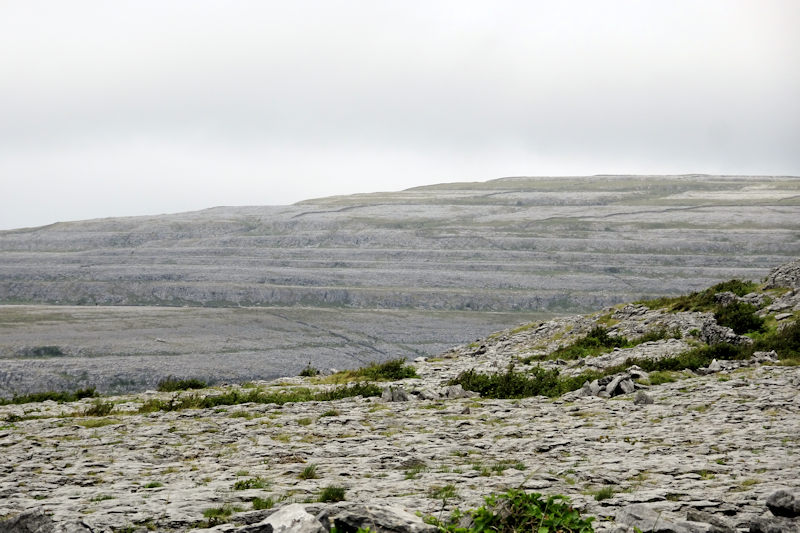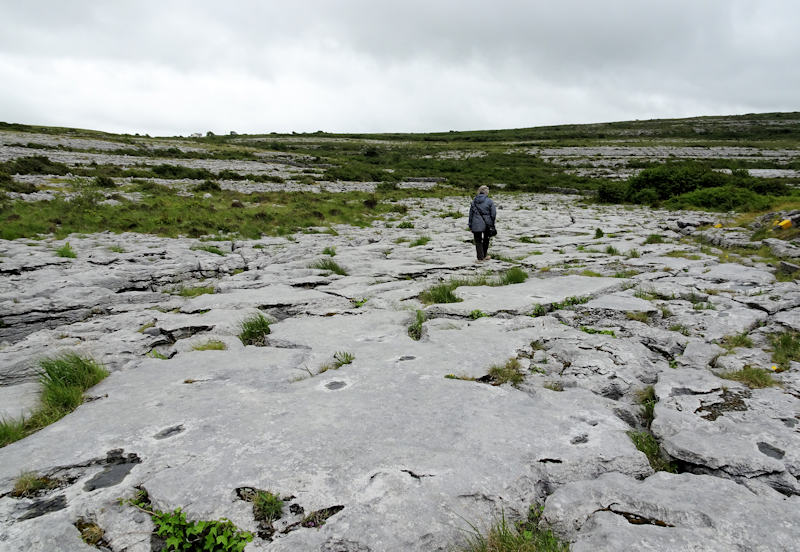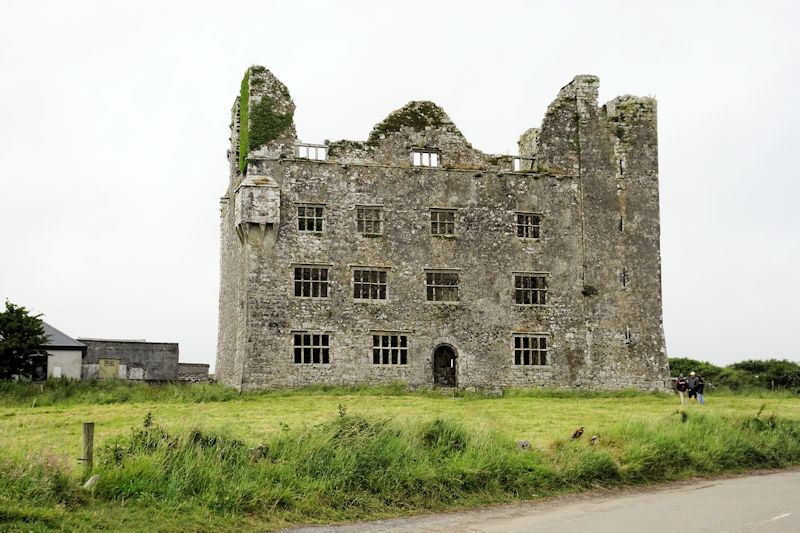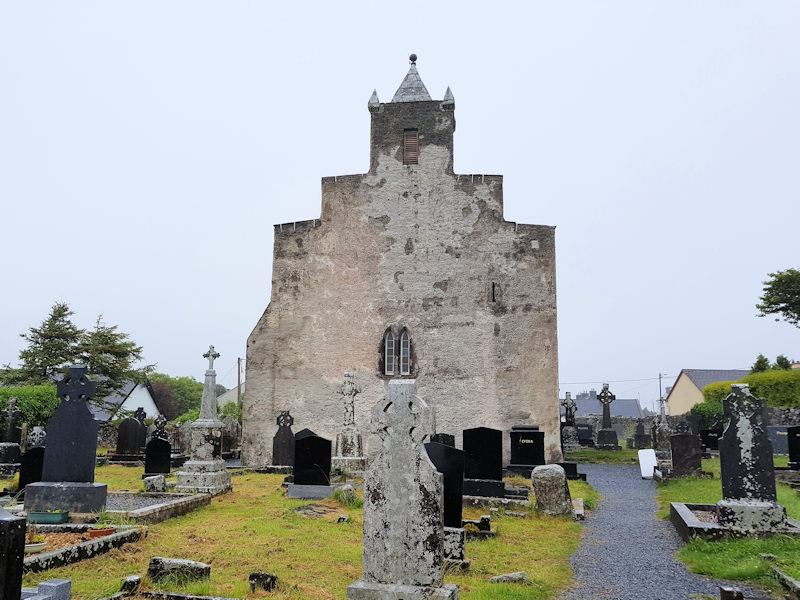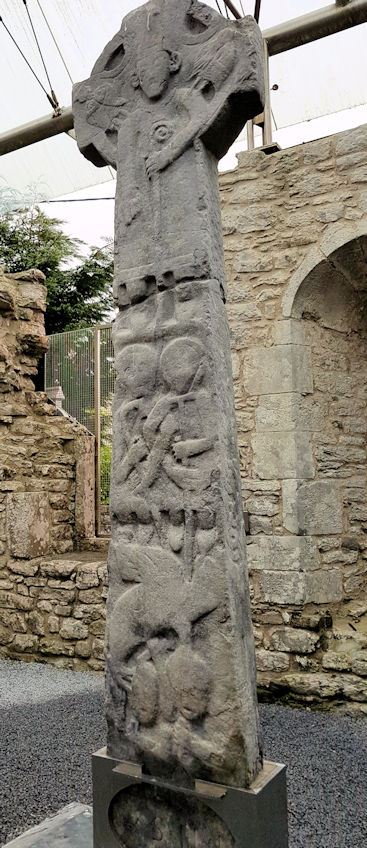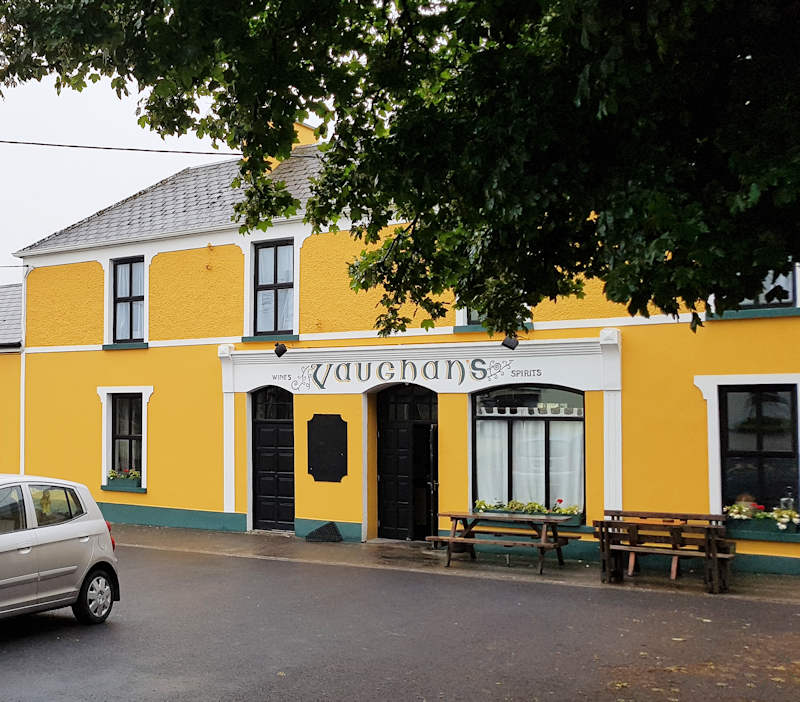We were struck by the
verbosity
of the road signs around here with SLOW and SLOWER painted on the roads
and a sign on the road out of Clifden telling foreign drivers to "Links
Fahren" (we had already met a hire car coming straight towards us
earlier).
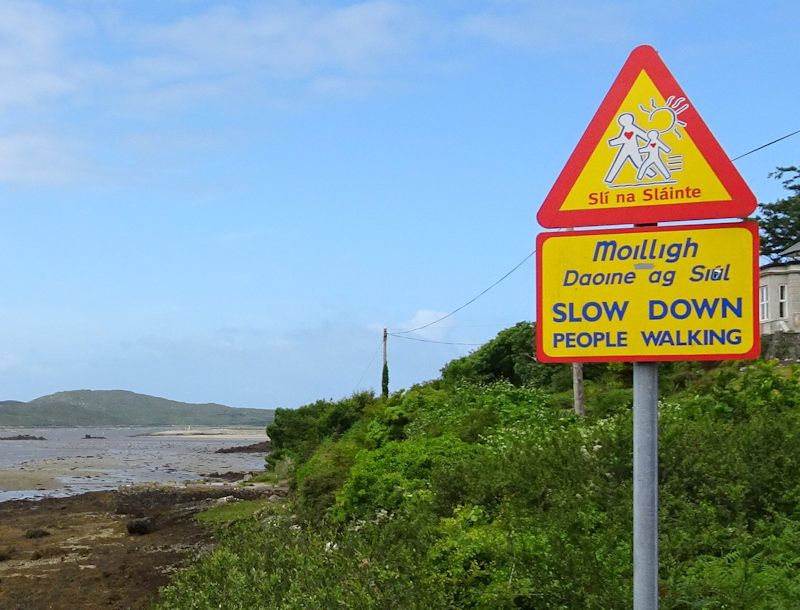
a non EU standard road sign
Leaving Clifden after a lazy day we followed the winding coast road
across rough rock strewn countryside with more and more bungalows,
some very tidy and others abandoned half built. A short diversion
down a very narrow lane took us to Dogs Bay with empty beaches of
silver sand on each side of a narrow grassy isthmus. After the small
village of Roundstone, the road passed many small lakes scattered
across the flat countryside with the Twelve Pins mountain range in the
distance. Once through Ros an Mhil, the main road was mostly
built up as we approached An Spidéal and another small campsite with
mostly static holiday caravans. The next morning was brighter so we
drove across typical Connemara countryside towards Lough Corrib to
visit Brigit's Garden, with four themed gardens celebrating the Celtic
festivals of Samhain, Imbolc, Beltaine and Lughnasafour, and pleasant
woodland trails and meadows. We then drove a short distance to
Oughterard but discovered that boat trips across the lough didn't start
until July, so returned to the campsite taking a good road across the
Connemara moors where cut peat was stacked to dry and passing many wind turbines.
Another damp day followed as we headed through Galway city and
along the southern side of Galway Bay to Kinvara, a small harbour with
colourful shops and bars, and on to Ballyvaughan for a lunch stop on
the
quayside.
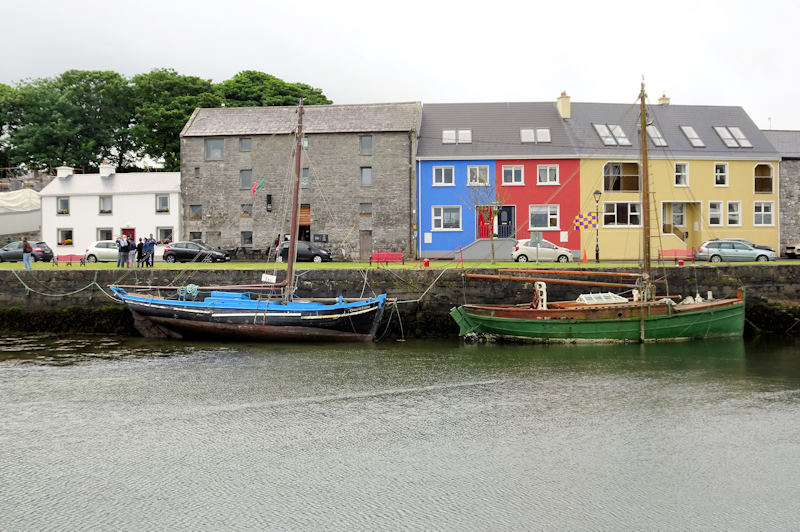
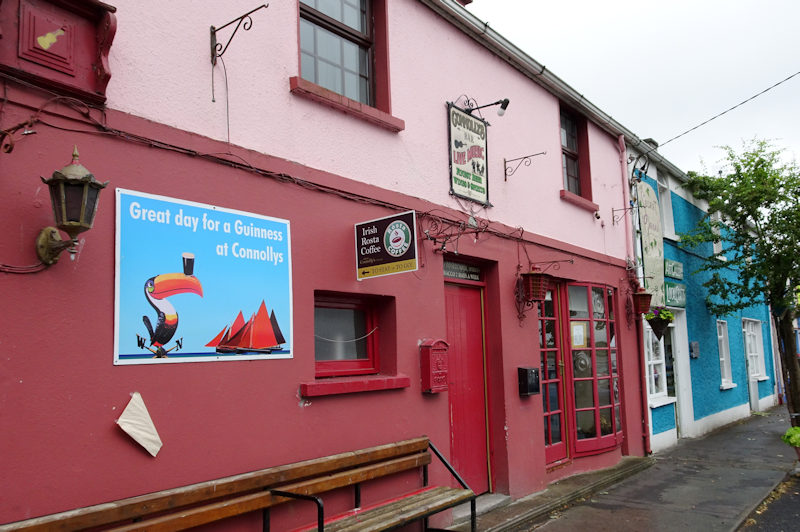
Kinvara
Now in County Clare we drove across the impressive limestone
countryside of the Burren, stopping at a parking area for a
short walk across the rocks with wild flowers in every crevice.
Continuing south we reached the eery ruin of Leamanagh Castle, not open
to the public despite its colourful history, and
pulled in to the large carpark behind Vaughan's Bar in the village
of Kilfenora, where the Father Ted TV series was filmed, and fans are
still attracted by an annual "Tedfest". As the evening progressed more
and more people arrived at the bar
and we discovered that a popular set dance was held every Sunday, so
enjoyed watching the expert dancers performing their intricate steps to
the lively sound of a Ceílí band. We had planned to visit Doolin that
weekend but as it was their folk festival and the campsites were
probably full, our diversion to Kilfenora proved to be a wise decision.
The village has an important historical past. The cathedral was built
in the eleventh century and there are five ancient crosses, some
preserved
under a glass roof in the cathedral ruins. Also the village is home to
its famous Ceílí band founded over one hundred years ago, and a popular
music and dance festival is held every April.
